Emmental Cheese in 2025: The Swiss Secret to Better Melts

Emmental cheese is known for its nutty taste and irresistible texture. It’s the stretchy, melty magic behind your favorite grilled cheese or fondue. That satisfying pull? Yes, it’s all Emmental.
Often called “Swiss cheese,” Emmental is easily recognized by its iconic holes or “eyes.” In this guide, we’ll explore how it’s made, what it tastes like and how to use it in your favorite recipes.
Jump to Section
- What Is Emmental Cheese?
- Flavor and Texture of Emmental Cheese
- How Emmental Cheese Is Made
- Emmental Cheese in Recipes
- Emmental Cheese Substitutes
- Where To Buy Emmental Cheese
- Emmental Cheese FAQs
What Is Emmental Cheese?
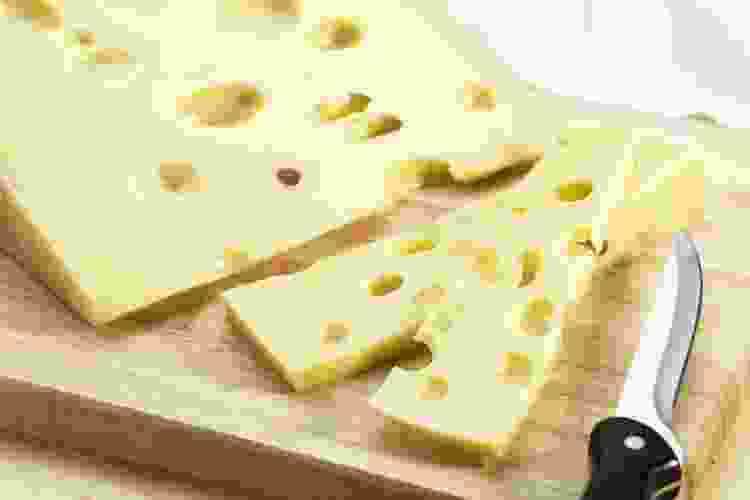
Emmental is a semi-hard cow’s milk cheese that comes from the Emmental region in Switzerland. It’s known for its pale yellow color, springy texture and iconic holes — technically called “eyes.” If you’ve ever seen “Swiss cheese” in a deli case, it’s probably a version of this.
What's the difference between Emmental cheese vs Swiss? In the U.S., Emmental and “Swiss cheese” are often used interchangeably. They’re not exactly the same. The core difference is in how they are made. Emmental is traditionally made with raw milk and natural bacteria, while the American version typically uses pasteurized milk and follows slightly different aging processes. Both melt beautifully, but Emmental has a nuttier, more buttery flavor.
If you're wondering about Emmental cheese pronunciation, it’s EM-uhn-tahl, the emphasis is on the first syllable: EM. In German-speaking areas, you’ll also hear it called Emmentaler.
Flavor and Texture of Emmental Cheese
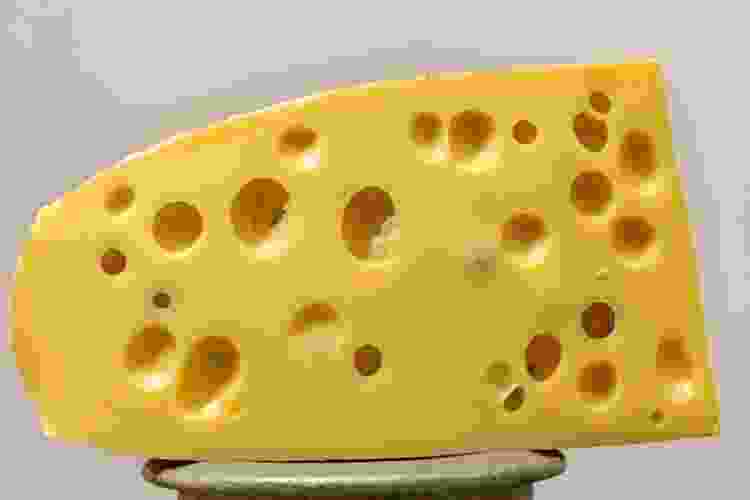
When you try Emmental — whether in Emmental cheese slices or melting over something warm and toasty — the first thing you’ll notice is its nutty flavor. It’s mild but distinct, with a buttery edge that makes it easy to pair with just about anything. It's a well-balanced type of cheese that's not too invasive when mixed with other ingredients.
Its texture is smooth, firm but mostly elastic and has a characteristic creaminess that intensifies when melted. That signature cheese pull? Yeah, this is the stuff. It’s rich without being heavy, flavorful without overpowering, and right at home in everything from fondue pots to gooey sandwiches and crisp gratins.
How Emmental Cheese Is Made

Making Emmental cheese is part science, part tradition and a lot of patience. The traditional Swiss process starts with fresh cow’s milk — traditionally raw — which gets heated and mixed with starter cultures and rennet. Once curds form, they’re cut, stirred and gently cooked before being pressed into massive wheels.
The wheels are then soaked in a saltwater brine, which helps develop the flavor and rind. After soaking, the wheels are stored in humid aging rooms. And this is where the magic happens: bacteria inside the cheese release carbon dioxide, forming those signature holes. The longer it ages, the more complex the flavor gets.
Emmental Cheese in Recipes
If you’re looking for a cheese that brings both a delicious flavor and amazing texture, Emmental cheese should be your go-to. You’ll find it in plenty of classic recipes, especially in European cuisine.
1. Classic Fondue

Emmental and Gruyère cheese are the stars of traditional cheese fondue. Melt a mix of the cheese with white wine, garlic and a touch of nutmeg for the ultimate dip. Serve with delicious vegetables, crusty bread or even apples for dipping.
Want to master classic recipes like fondue? Sign up for cooking classes in Atlanta, Baltimore, Chicago or a city near you and learn everything from the basics to modern techniques. Online cooking classes are also available if you're more comfortable learning from home.
2. Cheese Board
An easy way to include Emmental cheese is by adding it to a cheese board. It holds its own next to bold cheeses like blue or Gouda cheese, especially when paired with nuts or tart apples. Most cheese board ideas suggest including bold flavors with milder ones for the perfect balance.
3. French Onion Soup

Another French classic that pairs ever-so-well with Emmental: the French onion soup. That melted blanket on top of the soup? Emmental does it beautifully. Start with the soup base, made with caramelized onions and cover with Emmental cheese.
4. Croque Monsieur
For an upscale sandwich with Emmental cheese, you can't go wrong with a Croque Monsieur. It’s made with layers of ham and Emmental cheese, melted between slices of buttered bread and topped with creamy béchamel sauce.
5. Mac and Cheese
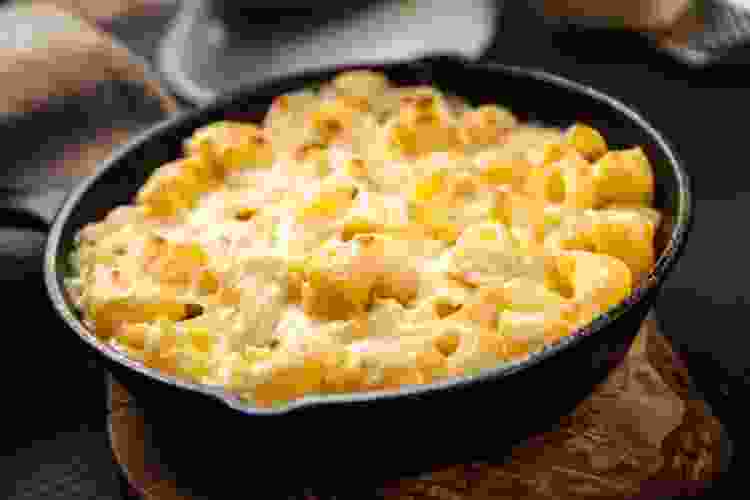
A classic that never fails is mac and cheese. And if you want to achieve the right level of cheesiness and that iconic stretch pull, then blending Emmental in your cheese mix is the right way to go.
6. Savory Crêpes
Serve up some savory crêpes with tasty ingredients like sautéed mushrooms, spinach and ham and melt some Emmental on top. The mild, nutty flavor of Emmental pairs perfectly with earthy vegetables, delivering cozy brunch vibes, French-style.
7. Cheese and Potato Gratin

If you like the combination of garlicky and creamy flavors, then you’ll definitely love a good cheese and potato gratin. Want that signature crust? Emmental cheese gives the top that golden, bubbly finish that makes gratin impossible to resist.
8. Chicken Cordon Bleu
Chicken cordon bleu is a gourmet classic made with chicken breasts, stuffed with ham and cheese. And the go-to filling? You guessed it, Emmental cheese. You'll have a melty, gooey center and an irresistible crunchy coating.
9. Quiche Lorraine
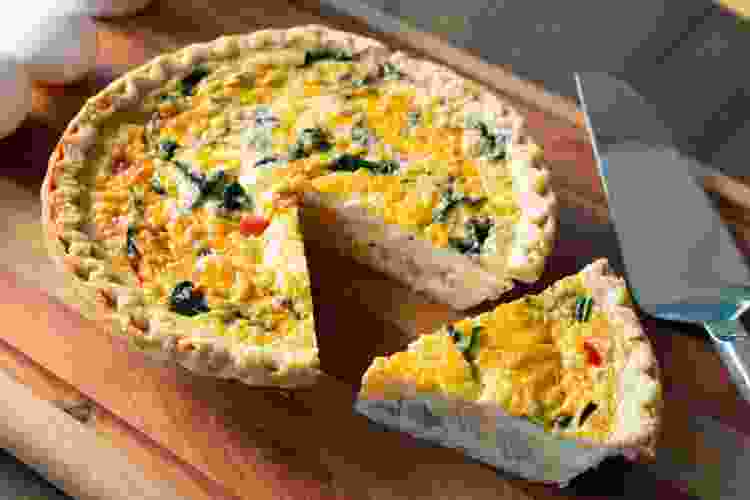
Quiche Lorraine, the famous French tart, is made with a flaky pastry crust and filled with a creamy egg custard, crispy bacon and plenty of Emmental cheese. It’s perfect for brunch or a light dinner.
10. Grilled Cheese Sandwich
Use Emmental for a grown-up twist on the grilled cheese — stretchy, gooey and golden. Just a few Emmental cheese slices and you'll have an amazing grilled cheese sandwich that transforms an everyday classic to an elevated special.
Emmental Cheese Substitutes
If you’re looking for the right Emmental cheese substitute, whether it’s because you don't have it on hand or you can’t find it in the supermarket, there are several cheeses that can step in with similar flavor and melting qualities.
If you can’t get your hands on Emmental cheese, don’t worry, there are plenty of worthy substitutes with similar flavor and melting magic. Gruyère is the top pick. It's also a Swiss cheese, but has a firmer texture and a richer, more savory flavor. While Emmental leans mild and creamy, Gruyère adds depth without losing that signature melt.
Jarlsberg is another solid option, often considered the Norwegian cousin of Emmental. It’s slightly sweeter, a little less nutty, but still melts beautifully. For something easier to find, standard Swiss cheese — the kind you’ll see in most U.S. grocery stores — does the trick in a pinch.
If you’re looking to get a little fancy, Comté and Fontina are both excellent stand-ins. Comté brings more earthy, layered notes, while Fontina is rich, smooth and slightly tangy, making it great in sauces or creamy bakes. It all depends on whether you’re after the melt, the nuttiness or both, but chances are, one of these will hit the mark.
Where To Buy Emmental Cheese

Most major grocery stores, like Whole Foods, Trader Joe’s, Kroger or Publix, stock Emmental in the specialty cheese section. For a more authentic cut, look for imported versions — they’ll often say “Emmentaler AOP.”
Online retailers like Murray’s Cheese, iGourmet and Amazon carry a wide range, including aged and raw milk varieties.
Pricing varies based on age and origin, but you’re generally looking at $15–30 per pound for prepackaged or pre-cut Emmental cheese, or for aged or specialty cuts, the prices may be lower at $15-20/lb.
Emmental Cheese FAQs
What Is Emmental Cheese Known as in the United States?
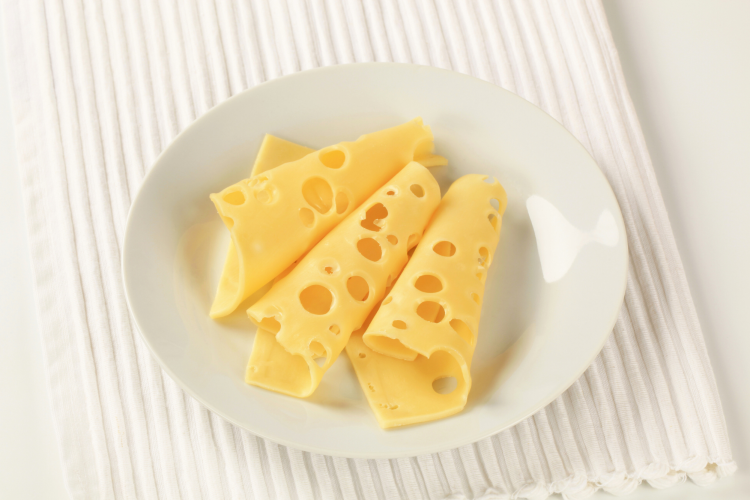
It’s usually labeled as “Swiss cheese,” especially in pre-sliced form. But authentic Emmental has a more distinct nutty flavor and smoother melt.
What Is Closest to Emmental Cheese?
Gruyère is the closest in flavor and texture, though Jarlsberg is also a popular, milder substitute with similar holes and meltability.
Can You Make Emmental Cheese at Home?
Technically, yes, but it’s not easy. You’ll need raw milk, a lot of aging space, specific bacterial cultures and months of time — plus a bit of luck for those holes to form just right.
Emmental cheese is the stretchy, nutty hero behind your favorite comfort foods. You can mix and blend stronger ingredients, and if you want to pull that classic cheesy stretch, Emmental is the go-to cheese for this. No matter how you use it, Emmental brings that cozy, golden goodness that makes everything taste a little better.
For even more fun foodie ideas, check out other experiences happening on Classpop!

